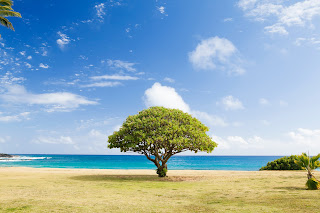Why you should try the Tomita Tsukemen from Seven Eleven Japan
I urge you to try the convenience store when you are in Japan. Even the Japanese are constantly amazed at how good the quality is, and the fabulous cost performance...
So today, I will introduce why you should try the tsukemen (つけ麺)collaborated with Seven Eleven and one of the most famous tsukemen restaurant in Japan, Tomita.
Tsukemen means "Dipping Noodles," Like in the picture above, you don't have the noodles in a broth but it's separated, and you dip the noodles in a thick broth to eat.
The Japanese are really beginning to love this type of neo Ramen, probably because:
- The noodles are usually served cold, very suitable during the warm/hot seasons.
- The noodles become chewier which we call "koshi ga aru"
- The noodles stay chewy. We absolutely hate overcooked noodles, which we call "nobiru."
Although I usually try to avoid processed/packaged food, The Tomita Seven-Eleven tsukemen always sit in my freezer!
My all-time favorite frozen food from Seven Eleven
I love the fact that this tsukemen from seven eleven, can be made even when I'm traveling.
All you need to cook the tsukemen is a microwave, water, and a kettle. Microwave is available in any seven eleven so water and kettle are all you need to cook it.
The preparation process is so easy...
Let me briefly introduce the preparation process to show how easy it is.
The inside of the package looks like this.
Boil about 500ml of water. (Tap water from the sink is safe to drink)
Put the noodle with the char siew side facing up on a microwave.

Microwave the broth following the instructions.
The white part on the picture says to keep that side facing up.
When it is melting in the microwave, the package will expand, then the package will automatically release the hot air so it doesn't end up exploding.

Once the microwave is done, peel off the top of the package of noodles following the dotted line.
rinse with cold tap water. We grab the noodles and press while rinsing to get more "koshi"コシ or chewiness. The water will drain from the small holes in the package.

Press firmly to remove excess water.
*Some Japanese like having tsukemen noodles warm, while some like it chilled. If you want the noodles to be hot, you can simply skip the rinsing step.

Serve the tsukemen broth in another bowl. It really has a rich bonito dashi flavor. I like to top it with vegetables and ramen eggs in my fridge, and add shichimi (七味)red peppers or kuroshichimi(黒七味)peppers from Hararyokaku(原了郭) for a bit of complex spiciness to the dish.
Visit the shop? or Seven Eleven
If you compare it to going to a decent ramen/tsukemen shop to eat, of course, I would say it tastes better in the shops. But you will be paying 2~3 times what you pay for this tsukemen, and you have travel expenses and time to access the tsukemen shop.
- 451JPY(3USD) for Seven Eleven x Tomita tsukemen
- 1250JPY~(8.5USD)Main Branch at Matsudo.
I love visiting the shops for the "real taste," but Seven Eleven definitely led me to travel a lot less to the actual shops.
Seven Eleven really does an amazing job...
The Tomita version is actually a premium version of the tsukemen lineup from Seven Eleven.
The normal tsukemen is 270 JPY (2USD)
In Seven Eleven, they also sell ramen eggs, menma, and other toppings you would use for your ramen!
Some Japanese including myself aren't completely happy with the convenience store improving so rapidly, as this will result in us taking a lot of preservatives and MSGs. A portion of the ramen shops can't compete resulting in the closure of the shops, too.
But Japan has experienced a long deflation with our annual income decreasing. So, people can't help looking for cheaper but quality products.
That's why it's an opportunity for convenience stores to be creative in what they do, and the same goes for the shops. Tsukemen shops like Tomita or Rokurinsha, have been very successful in gaining popularity!
- The Best tip when traveling to Japan: make full use of the "konbini" convenience stores
Follow me for more to come :)
In this blog, I post my food trips around the world, as insights into Japanese food in comparison to all the different cuisines I encounter through my trips.
I love food businesses that aren't just into making profits but strive to protect their food culture and are genuinely passionate about what they do. I feel I can share with the world all my food experiences that filled my heart:)
Having a relative at a green tea farm in "one of the biggest green tea plantation cities, Kakegawa," an uncle running an unagi eel restaurant in an "eel town of Japan, Hamamatsu," and a mother who was one of the first people to introduce the izakaya culture in Silicon Valley, my life has a lot to do with Japanese food culture.
I have traveled to many places in Japan, so I hope to share what I know to help you better plan your food trip to my home country!
“When you eat, it’s supposed to go deep into your heart.
Whether you are rich or poor, eating isn’t just to fill your stomach, it is also to fill your heart.”
- Ryu Aomi 青海 龍










Comments
Post a Comment